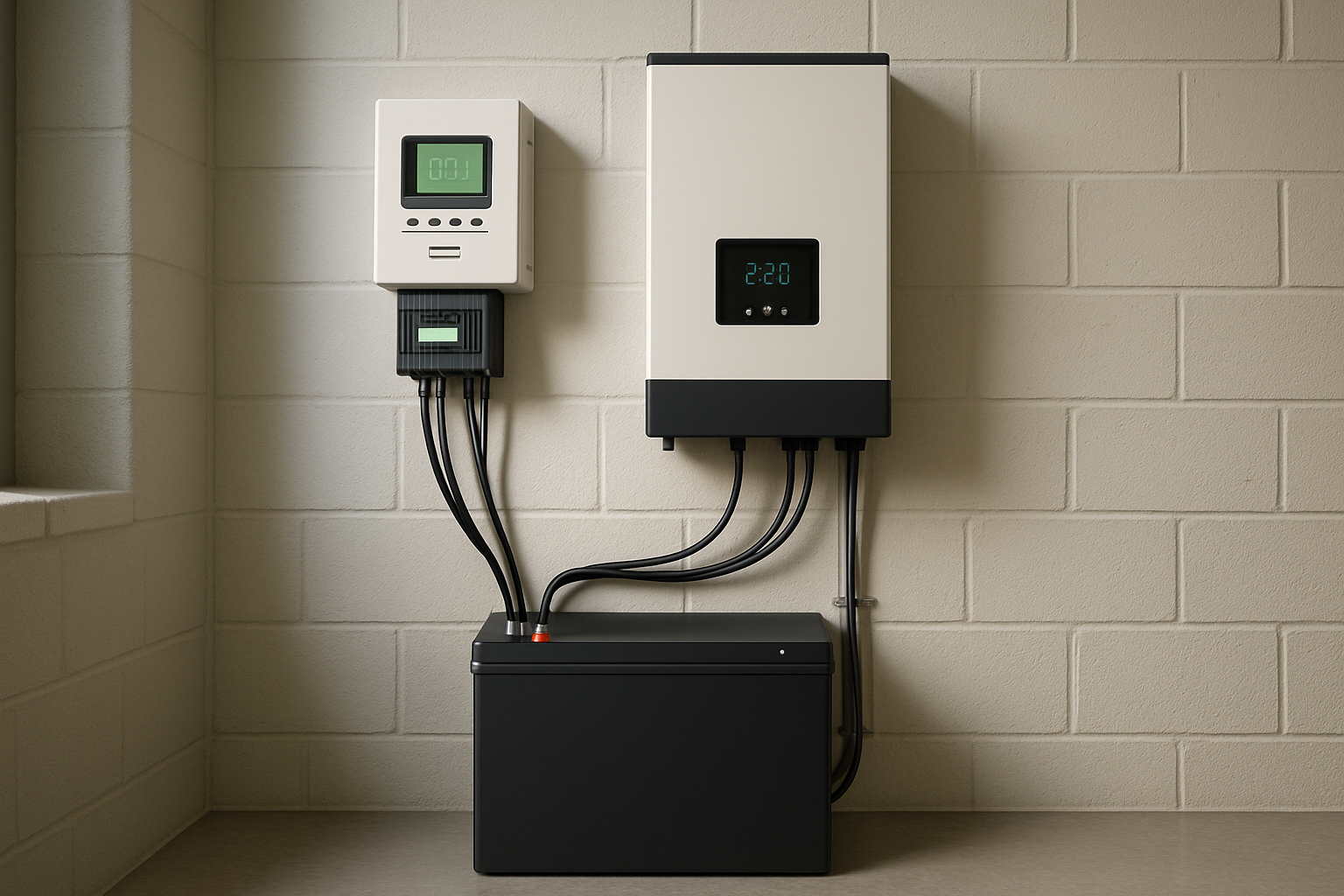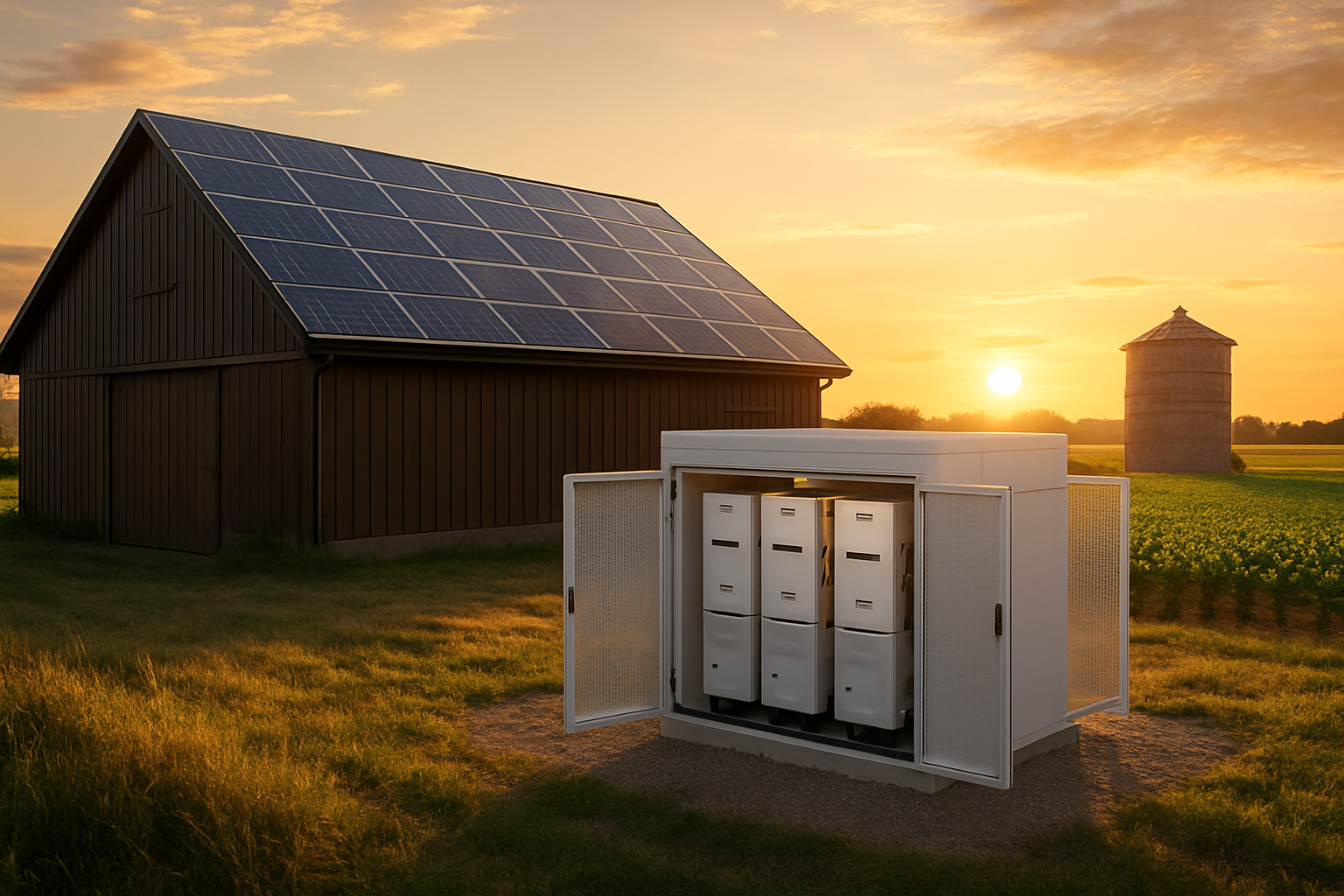Achieving energy independence with an off-grid solar system is a significant accomplishment. The heart of this independence is the battery bank, which stores the sun's energy for use at night or on cloudy days. Lithium Iron Phosphate (LiFePO4) batteries are a leading choice for these systems due to their long lifespan, safety, and high efficiency. However, their advantages are only realized when the system is sized correctly. Miscalculations can lead to premature system failure, inadequate power supply, and wasted investment. This article outlines five critical lithium battery sizing mistakes to avoid, ensuring your off-grid system is both reliable and cost-effective.
1. Underestimating Daily Energy Consumption
The most fundamental error in solar battery sizing is a poor estimation of your actual energy needs. A rough guess will almost certainly result in a system that cannot meet your demands.
The Flaw of Guesswork
Simply assuming a certain battery capacity will suffice without a detailed analysis is a recipe for frustration. An undersized battery bank will deplete too quickly, leaving you without power. An oversized system means you have paid for capacity you will never use, inflating your initial investment unnecessarily.
Conducting a Thorough Energy Audit
A precise calculation of your daily energy use, measured in Watt-hours (Wh), is the only reliable starting point. You can do this by listing every appliance you intend to power. For each device, find its power consumption in Watts (W) and estimate the number of hours it will run per day. Multiply these two values to get the daily Watt-hours for each appliance, then sum them all for a total.
| Appliance | Power Rating (Watts) | Hours of Use per Day | Daily Energy (Watt-hours) |
|---|---|---|---|
| LED Lights (x5) | 50 W | 6 hours | 300 Wh |
| Refrigerator | 150 W (cycles on/off) | 8 hours (equivalent) | 1200 Wh |
| Laptop Charger | 65 W | 4 hours | 260 Wh |
| Water Pump | 500 W | 0.5 hours | 250 Wh |
| Total Daily Consumption | 2010 Wh |
2. Ignoring the Battery's Depth of Discharge (DoD)
Not all battery capacity is usable. Depth of Discharge (DoD) refers to the percentage of the battery's total capacity that has been discharged. This is a critical factor where LiFePO4 batteries excel.
What DoD Reveals About Usable Energy
LiFePO4 batteries can be safely discharged to 80-95% of their total capacity without significant degradation to their lifespan. In contrast, traditional lead-acid batteries are often limited to a 50% DoD to avoid damage. This means a 100Ah LiFePO4 battery can provide 80-95Ah of usable energy, while a 100Ah lead-acid battery only provides around 50Ah. Ignoring this difference is a frequent solar battery sizing error.
The Sizing Impact of High DoD
Because you can use more of the stored energy in a lithium battery, you can often install a smaller nominal battery bank compared to other technologies. This not only saves physical space but also reduces upfront costs. Factoring in the high DoD of a LiFePO4 battery is essential for an accurately and economically sized system.
3. Overlooking the C-Rate and Power Demands
Battery capacity (Ah) tells you how much energy is stored, but it does not tell you how fast that energy can be delivered. This is where the C-rate becomes a vital, yet often overlooked, specification.
Understanding the C-Rate
The C-rate measures the rate at which a battery is discharged relative to its maximum capacity. A 1C rating means the battery can be fully discharged in one hour. For a 100Ah battery, a 1C discharge rate is 100 Amps. A 2C rate would be 200 Amps (discharged in 30 minutes), and a 0.5C rate would be 50 Amps (discharged in two hours).
Matching C-Rate to Your Appliances
Many off-grid homes have appliances with high power surges, such as well pumps, power tools, or microwaves. These devices may require a large burst of power for a short time. Even if your battery bank has enough total capacity, it must also have a C-rate high enough to meet that peak demand. A battery with a low C-rate will be unable to deliver the required power, causing voltage to sag and potentially shutting down your inverter.
4. Neglecting Environmental Factors and System Inefficiencies
A battery's performance is not static; it is influenced by its operating environment and the efficiency of the entire solar setup. Sizing calculations must account for these real-world variables.
The Effect of Temperature
LiFePO4 batteries perform well in a wide range of temperatures, but extreme cold or heat can still impact their efficiency and longevity. Very low temperatures can temporarily reduce a battery's available capacity, while high temperatures can accelerate degradation over time. It is wise to install the battery bank in a location with some temperature regulation and to factor in a small buffer if it will be exposed to significant temperature swings.
Accounting for System Losses
Energy is lost at every conversion step in a solar power system. The inverter (converting DC from the batteries to AC for your appliances), the charge controller, and even the wiring itself contribute to energy losses. These losses can add up to 10-20%. A prudent design adds a buffer of at least 15% to the total calculated energy need to compensate for these inefficiencies. For a closer examination of the different elements that affect system output, a detailed analysis of solar storage performance metrics can offer valuable information.
5. Failing to Plan for Autonomy and Future Growth
A reliable off-grid system should not just work on sunny days. It must provide power through periods of bad weather and be ready for your future needs.
Calculating Days of Autonomy
‘Days of autonomy’ refers to the number of consecutive cloudy or stormy days your fully charged battery bank can power your home without any input from the solar panels. For most residential applications, planning for two to three days of autonomy is a safe standard. To calculate this, simply multiply your total daily energy consumption by the number of autonomous days you require. For example, a 2010Wh daily need would require a usable battery capacity of 6030Wh (6.03 kWh) for three days of autonomy.
Sizing for Scalability
Your energy needs may increase over time. You might purchase new appliances, build a workshop, or add an electric vehicle charger. When selecting your initial system, consider a modular lithium battery solution. This allows you to easily add more battery capacity in the future without replacing the entire bank, making your system a flexible, long-term investment.
A Foundation for Energy Independence
Properly sizing your lithium battery bank is the bedrock of a successful off-grid solar system. By conducting a detailed energy audit, understanding the nuances of DoD and C-rates, accounting for real-world inefficiencies, and planning for the future, you avoid the common mistakes that undermine energy independence. This careful planning ensures your system will deliver dependable power for years to come, providing true peace of mind and a solid return on your investment.
Disclaimer: This article provides general information and is not a substitute for professional engineering or financial advice. Consult with a qualified solar installer to design a system tailored to your specific needs and local regulations.
Frequently Asked Questions
What is the ideal DoD for a LiFePO4 battery in an off-grid system?
While LiFePO4 batteries can often be discharged to 90% or more, many users operate them at a maximum of 80% DoD. This less aggressive usage pattern can help optimize the battery's cycle life, potentially extending its service well beyond the warrantied period. It also leaves a small buffer for unexpected situations.
How do I calculate my peak power needs?
To determine your peak power (measured in Watts), identify all the high-draw appliances that could potentially run at the same time. For example, a microwave (1200W) and a water pump (500W) running simultaneously would create a peak demand of 1700W. Your inverter and battery must be capable of handling this instantaneous load.
Is it better to oversize or undersize my battery bank?
Undersizing a battery bank is a critical failure. It leads to excessive cycling, voltage sag, and an inability to meet your power needs. Slightly oversizing your battery bank (by 10-20%) is generally a good practice. It provides a safety margin for cloudy weather, accounts for battery degradation over time, and accommodates small increases in future energy use. However, significant oversizing is not cost-effective.





Leave a comment
All comments are moderated before being published.
This site is protected by hCaptcha and the hCaptcha Privacy Policy and Terms of Service apply.